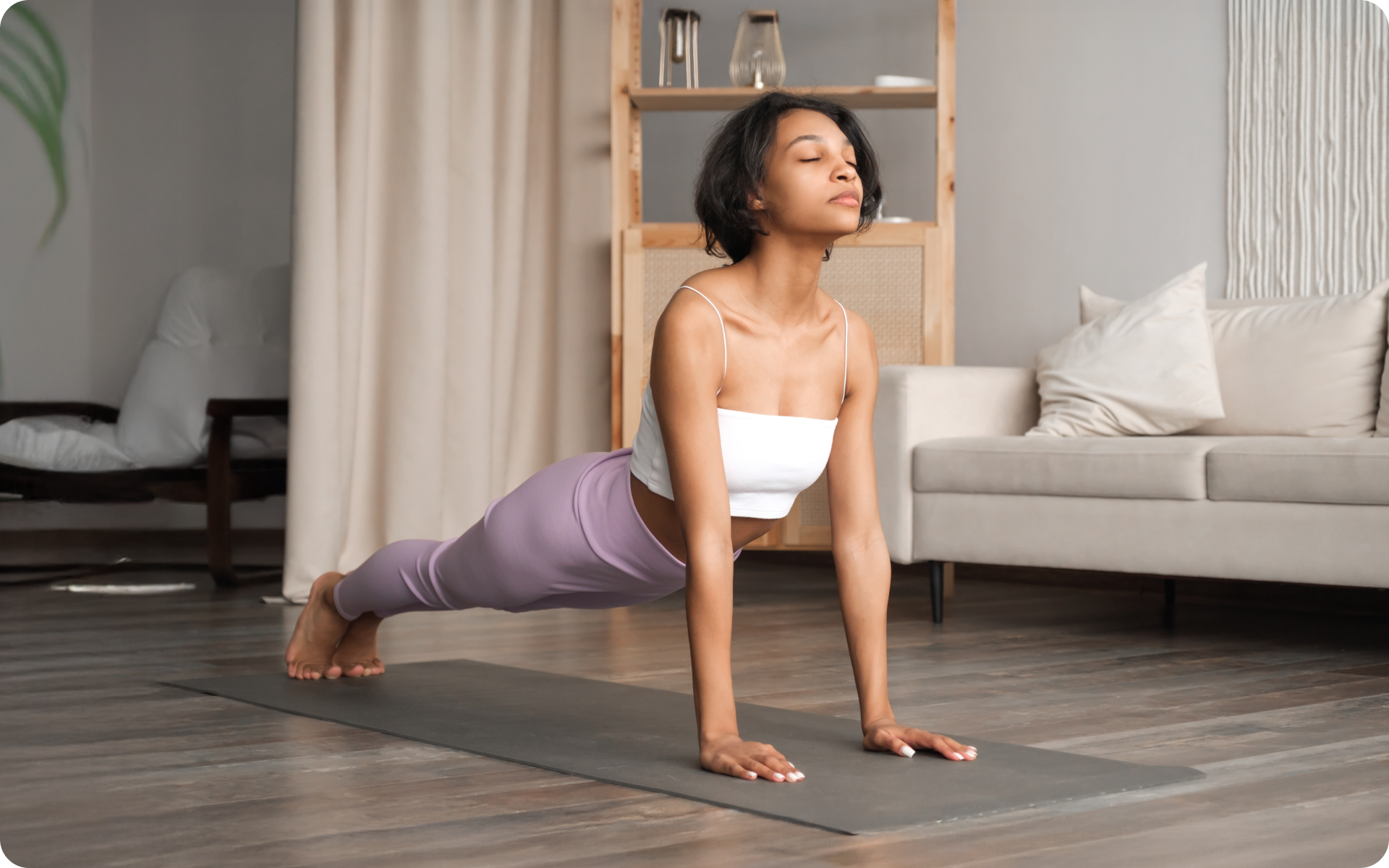Firefighting is a demanding occupation. This job puts you at great risk as you fight fires to save lives and protect property and the environment. And because of the nature of the job, you are required to be healthy and very fit. That said, doing your typical cardio workout routine may not be helpful. You need a specialized firefighter physical fitness program to help you maximize your performance at work, build strength and reduce your risk of injury. But beyond having a great firefighter fitness program, what else do you need to know to achieve good health and become more fit? We look at firefighter workouts, nutrition, and how to make the most out of your fitness routine.
Get your personalized
meal plan!
Firefighter Fitness
Heart attack is currently the leading cause of death worldwide. It is also the leading cause of death for on-duty firefighters (5). The only way to mitigate this is to adopt healthier lifestyles that include proper nutrition, stress management, and fitness programs tailored to suit the needs of firefighters.
These health and fitness programs help increase strength, endurance and decrease stress and anxiety while helping firefighters maintain a good level of physical fitness. Since firefighting can be a physically strenuous activity, firefighters are required to maintain a good level of fitness throughout their careers.
Note that a good training program should be specific to an individual’s age, general health, lifestyle, fitness level, and fitness goals. As you look around for a training program, consider these factors and ensure the program suits your needs and doesn’t strain you.
Do not think of a fitness program as a quick way of achieving your fitness goals. Keep in mind that it requires a lot of effort, patience, self-discipline, and efficient time use. The goal should be to achieve a good level of physical fitness and maintain it in the long term.
The 4 main components of a workout program are the type of exercise, intensity, frequency, and duration of the training. These aspects can be manipulated to achieve the desired training effect. A proper firefighter workout routine should have 3 to 5 days of exercise and rest days.
The goal of a firefighter fitness program routinely improves (4):
- Aerobic endurance – the body’s ability to sustain continuous low to high-intensity physical exercise for prolonged periods through the continual acquisition of oxygen.
- Muscular strength – the ability to to lift, pull, push or move heavy objects over a short distance and period.
- Muscular endurance – the ability to lift, pull, push or move heavy objects for prolonged periods.
- Flexibility – the ability to move a single joint or a series of joints through an unrestricted, range of motion pain free.
Aerobic workouts help build aerobic endurance while stretching helps improve flexibility. To improve muscular strength, try circuit training and light weight lifting. And, to build muscular endurance, try heavier weight training exercises such as bench press, squats.
Read More: How Much Running To Lose Weight? How To Use Cardio Effectively To Meet Your Fitness Goals
Firefighter Fitness Training Program
A firefighter physical fitness program should be about 12 weeks long. It should contain a variety of workouts including – aerobic exercises, weight-training exercises, flexibility, and high intensity interval training.
Common workouts for firefighters include:
- Weight training exercises: chest press, shoulder press, weighted squat, lateral pull-down, seated row, weighted lunges, floor-to-ceiling press, deadlifts
- Circuit training exercises: Press-ups, squats, lunges, burpees, squat thrusts, abdominal crunch, back extensions, tuck jumps, stride jumps,
- Flexibility Exercises: Quadriceps stretch, hamstring stretch, groin stretch, calf stretch, triceps stretch
Make sure to listen to your body and slow down if necessary. Remember to rest enough to allow proper muscle recovery. Make sure you get enough sleep (about 7 to 9 hours).
A typical workout week should look like this:
- Mon: Steady run
- Tue: Resistance training (strength & endurance) or flexibility workout
- Wed: Fartlek (speed training)
- Thu: Resistance training, flexibility workouts, or active rest
- Fri: Steady run
- Sat: Rest
- Sun: Resistance training
Here is a sample firefighter fitness training program for the first 3 weeks:
Week 1
Monday
- Run – steady pace 20 minutes at 60-85% HR max
Tuesday
- Split squats 3 sets of 10-12 reps, with a 1 min rest in between
- Deadlift 3 sets of 10-12 reps, 2 minutes rest
- Glute ham raises 3 sets of 8-10 reps, rest 1 min
- Side Bridge 3 sets of 12 reps on each side
Wednesday
- Flexibility workout (60 seconds for each stretching exercise) or active rest
Thursday
- Bench press 3 sets of 10-12 reps, rest 2-3 min
- Pull-ups 3 sets of 10-12 reps, rest 2 min
- Dips 3 sets of 10-12 reps, rest 1 min
- Ring rows 3 sets of 10-12 reps, rest 1 min
Friday
- Run – steady pace 20 minutes at 60-85% HR max
Saturday
- Flexibility workout (60 seconds for each stretching exercise)
Sunday
- Rest
If you wish to free yourself from all the extra pounds that have been weighting you down for way too long, start using the BetterMe app and overhaul your entire life!
Week 2
Monday
- Run – steady pace 20 minutes at 60-85% HR max
Tuesday
- Split squats 3 sets of 10-12 reps, with a 1 min rest in between
- Deadlift 3 sets of 10-12 reps, 2 minutes rest
- Glute ham raises 3 sets of 8-10 reps, rest 1 min
- Side Bridge 3 sets of 12 reps on each side
Wednesday
- Flexibility workout (60 seconds for each stretching exercise)
Thursday
- 25 minutes FARTLEK at 75 to 85% HR max
Friday
- Standing Press 3 sets of 6-8 reps, rest 2 min
- Bent over rows 3 sets of 6-8 reps, rest 2 min
- Seated dumbbell press x 6-8 reps, rest 1 min
- Dumbbell row 2 sets of 15 reps, rest 1 min
Saturday
- Rest
Sunday
- Back squats 3 sets of 10-12 reps, rest 2-3 min
- Good mornings 3 sets of 10-12 reps, rest 2 min
- Swiss ball leg curls 3 sets of 8-10 reps, rest 1 min
- Plank on elbows for (1 min, rest 15 sec) X 3
Week 3
Monday
- Run – steady pace 25 minutes at 70-90% HR max
Tuesday
- Front squats 3 sets of 10-12 reps, rest 2-3 min
- Deadlift 3 sets of 6-8 reps, rest 2 min
- Cable machine leg curls 3 sets of 8-10 reps, rest 90 sec
- Side Bridge 3 sets of 12 to 15 reps on each side
Wednesday
- Flexibility workout (60 seconds for each stretching exercise)
Thursday
- Weighted step-ups 3 sets of 8-10 reps for each leg, rest 2 min
- Good Mornings 3 sets of 6-8, rest 2 min x3
- Single leg swiss ball leg curls 3 sets of 6-8 reps, rest 30 sec in between legs
- Plank on elbows (1:45 minutes, rest 15 sec) X 2
Friday
- Bench press 3 sets of 10-12 reps, rest 2-3 min
- Pull-ups 3 sets of 10-12 reps, rest 2 min
- Dips 3 sets of 10-12 reps, rest 1 min
- Ring rows 3 sets of 10-12 reps, rest 1 min
Saturday
- Rest
Sunday
- 35-45 min hike at zone 1
Read More: Partner Workouts: Level Up Your Fitness Game With This Simple Yet Effective Strategy
How To Get The Most Out Of Your Training Program
Here are tips to help you maximize the benefits of your workout regime:
Warm-Up And Cool Down
A warm-up and cool-down should be part of every workout routine. Warming up prepares your body for activity by increasing your body temperature and blood flow to muscles. It also helps prevent injury (3). A warm-up session should be between 5 to 10 minutes.
A cool-down session on the other hand allows for the recovery of your pre-activity heart rate and blood pressure thus helping in regulating blood flow. It, however, has no impact on the reduction of injuries (2). Cooling down should be done at a low intensity for about 5 minutes.
Start Slow
This is especially important if you have not been working out at all. Start your workouts at a lower intensity then gradually increase it to warm up your muscles. This will help you reduce the risk of getting injured.
Start by working out for about 30 minutes during each session. And as your body gets used to the stress placed upon it by working out, you can increase your workout intensity and duration to about 45 minutes to 1 hour and eleven reduce the length of the rest intervals.
Don’t train if you are injured or feeling unwell. If you train too hard and too much you might end up getting injured and not training at all.
Hydrate
Proper hydration is crucial for good health. Proper hydration is key for thermoregulation, lubricating joints, the function of organs such as the kidney, and the excretion of toxins and waste products (9).
So, always have a bottle of water with you whenever you are working out. You can also choose to drink electrolyte drinks which help improve performance (6).
Yanking yourself back in shape has never been so easy with our game-changing fitness app! Start transforming your life with BetterMe!
Eat Right
It would make no sense to train daily but constantly snack on salty snacks or eat fries and burgers for lunch and dinner. You should eat whole, nutrient-dense foods to provide you with all the nutrients and minerals you need.
With this in mind, go for lean protein that helps build muscle mass and prevent exercise-induced muscle loss (1). Eat complex carbs to maximize glycogen synthesis to replenish the glycogen stores used up during your workout out (7). Your diet should also include fruits, vegetables, and healthy fats.
Wear The Right Gear
Any time you are working out, dress in comfortable workout clothes. They shouldn’t be too tight as this might restrict your movement. They also shouldn’t be too loose that you have to keep adjusting them during the workout for instance by pulling up your pants.
The type of shoe you wear is also important as it helps minimize your risk of injury (8). Find a good training shoe that supports your heel and ankle. Your workout shoe should also be a perfect fit.
Conclusion
Exercise helps to improve both physical and mental health. For firefighters, maintaining a good level of physical fitness is important to meet the tough demands of the job while remaining healthy.
A good firefighter fitness program should be able to accommodate your fitness goals and fit into your daily schedule. Once you decide on a training program remember to be consistent, patient, and disciplined.
Also remember to get enough rest, hydrate, eat right, and have fun while at it.
DISCLAIMER:
This article is intended for general informational purposes only and does not serve to address individual circumstances. It is not a substitute for professional advice or help and should not be relied on for making any kind of decision-making. Any action taken as a direct or indirect result of the information in this article is entirely at your own risk and is your sole responsibility.
BetterMe, its content staff, and its medical advisors accept no responsibility for inaccuracies, errors, misstatements, inconsistencies, or omissions and specifically disclaim any liability, loss or risk, personal, professional or otherwise, which may be incurred as a consequence, directly or indirectly, of the use and/or application of any content.
You should always seek the advice of your physician or other qualified health provider with any questions you may have regarding a medical condition or your specific situation. Never disregard professional medical advice or delay seeking it because of BetterMe content. If you suspect or think you may have a medical emergency, call your doctor.
SOURCES:
- Dietary Protein and Muscle Mass: Translating Science to Application and Health Benefit (2019, mdpi.com)
- Do We Need a Cool-Down After Exercise? A Narrative Review of the Psychophysiological Effects and the Effects on Performance, Injuries and the Long-Term Adaptive Response (2018, link.springer.com)
- Effects of Warming-up on Physical Performance: A Systematic Review With Meta-analysis (2010, journals.lww.com)
- Firefighter 12 Week Fitness Programme (n.d., dwfire.org.uk)
- Health and Fitness Programs for Firefighters: Strength & Conditioning Journal (2011, journals.lww.com)
- Practical Hydration Solutions for Sports (2019, mdpi.com)
- Regulation of Muscle Glycogen Repletion, Muscle Protein Synthesis and Repair Following Exercise (2004, ncbi.nlm.nih.gov)
- The role of shoes in the prevention of ankle sprains (1995, pubmed.ncbi.nlm.nih.gov)
- Water, hydration, and health | Nutrition Reviews | Oxford Academic (2010, academic.oup.com)















